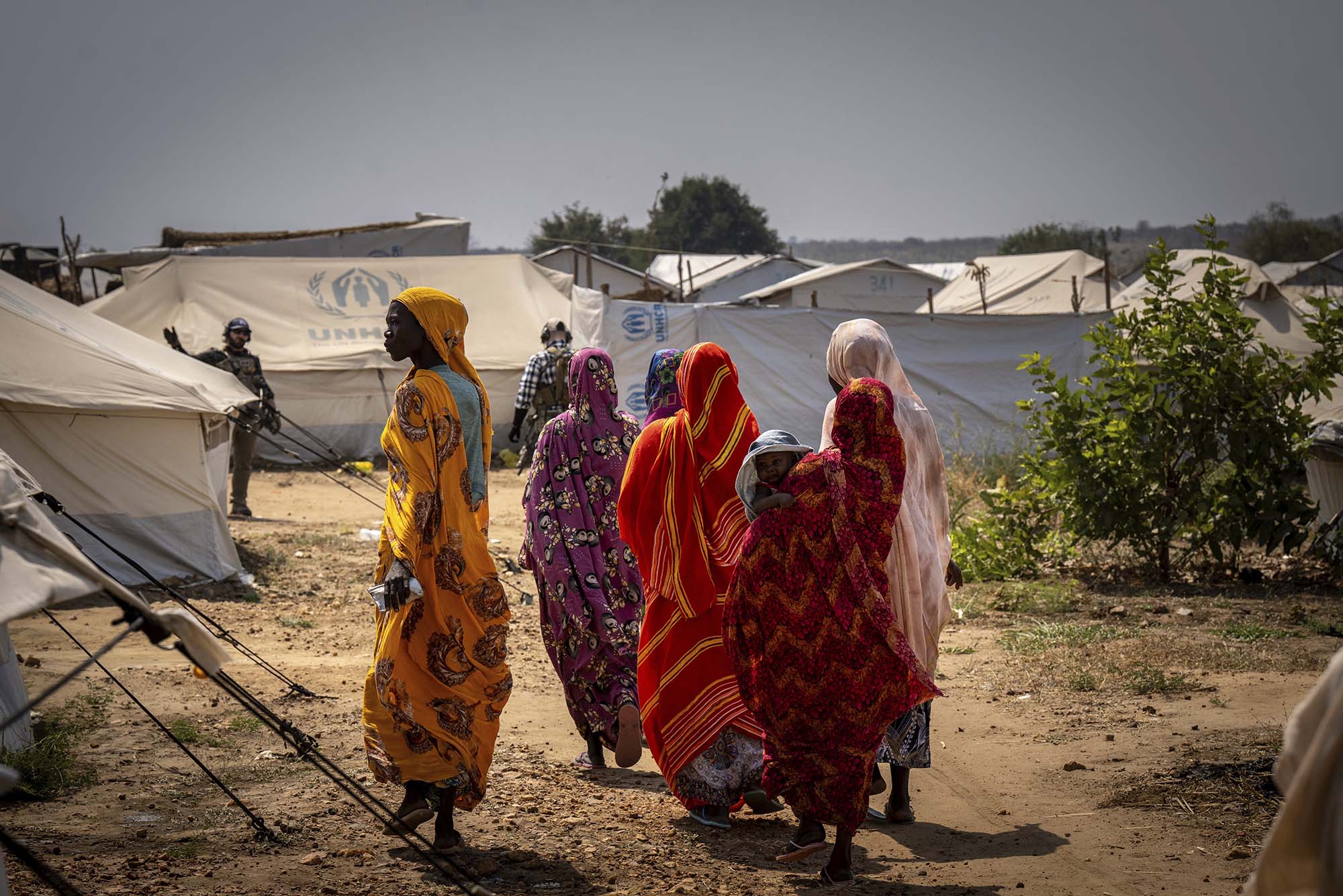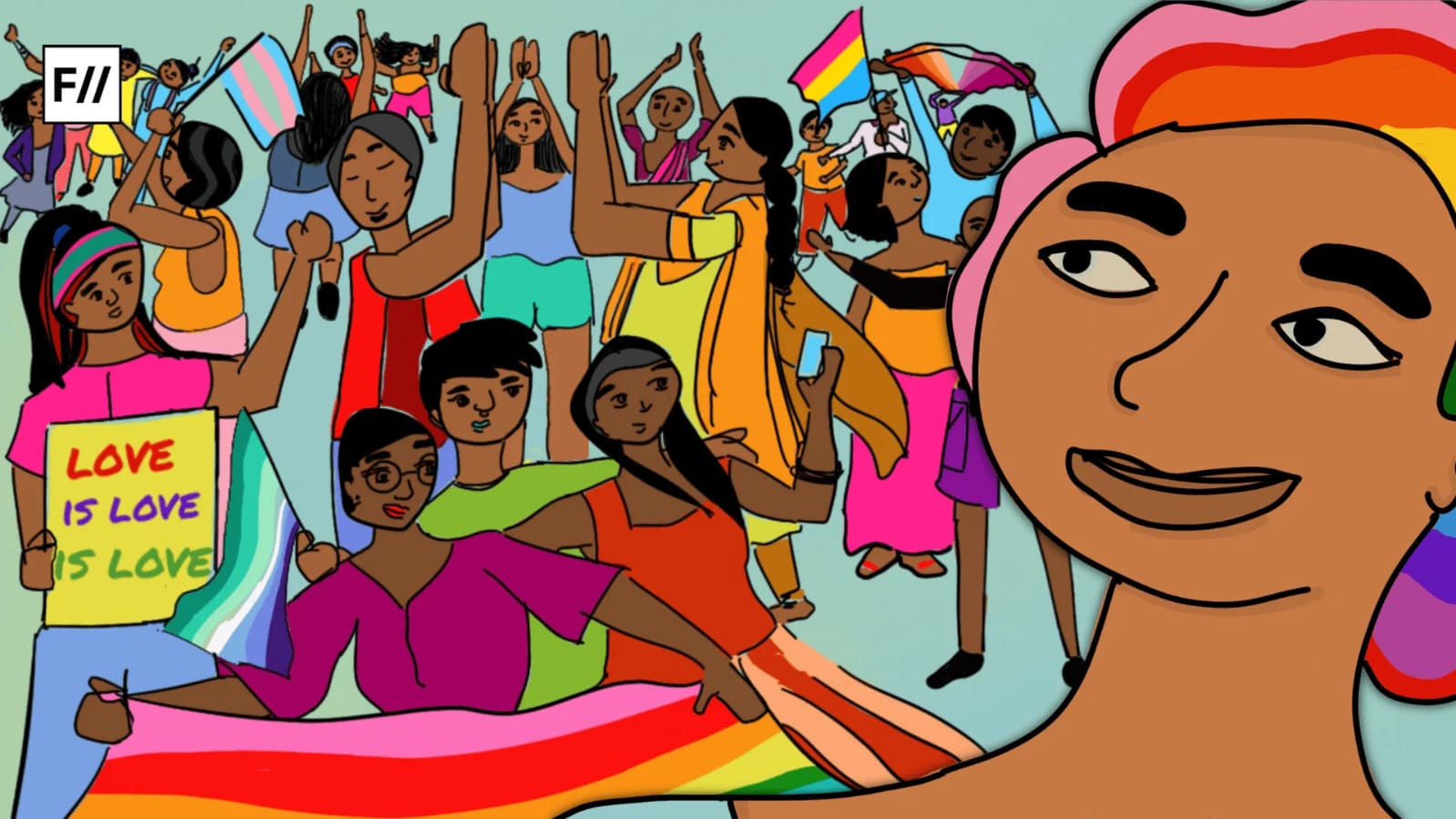In the light of mob lynching of Tabrez Ansari, a 24-year-old Muslim youth brutally injured under the suspicion of theft, simultaneous protests were organised across 70 cities on June 26th. In Delhi, around 5 pm, Jantar Mantar bore witness to a protest against the 18th lynching in Jharkhand, which surfaced as a disturbing video on social media and left many in utter abhorrence. The protest was a joint effort led by many such as United Against Hate, All India Students’ Association, activists such as Kanhaiya Kumar, Umar Khalid, Nadeem Khan, Kavita Krishnan amongst others.


Citizens Initiated The Protests
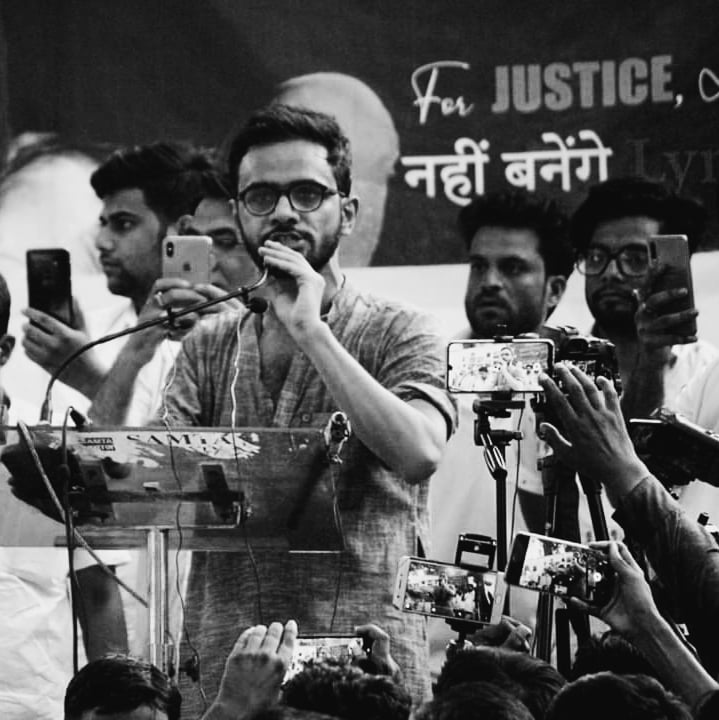
Umar Khalid put out a Facebook status appealing citizens to organise “simultaneous, country-wide protests against the continuing incidents of mob violence.” He tells Feminism In India that “People responded on their own and co-ordinated protests in their own localities. It was a spontaneous outburst of anger. The death of Tabrez follows a larger pattern of organised mob violence. It’s continued for as long because the government hasn’t intervened. And when it did intervene, it was to protect the lynchers. In such a scenario, people from over 70 cities in the country decided to take action and protest.”
The video shows the mob coercing Tabrez Ansari to chant ‘Jai Shri Ram’ and ‘Jai Hanuman’ and continued to relentlessly thrash him.
Tabrez Ansari: Incident Report
The incident came to light after videos of the lynching when viral on social media. The 24-year-old, Tabrez Ansari was accused of being a thief and had been tied to an electric pole by villagers. The video shows the mob coercing him to chant ‘Jai Shri Ram’ and ‘Jai Hanuman’ and continued to relentlessly thrash him. The police swung into action, arresting 11 people, including the main accused Papa Mandal, but only after the incident became a media circus. Tabrez’s death is the 18th incident of mob violence in Jharkhand during the Modi government years of 2014-2019.
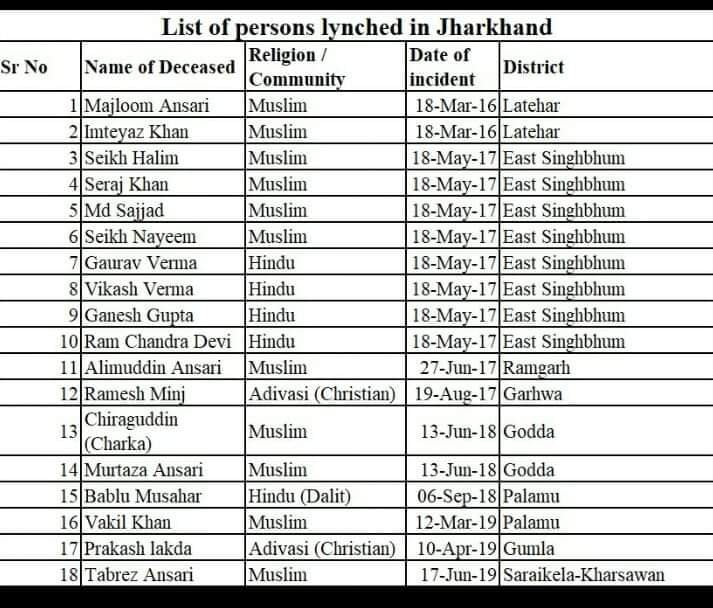
According to IndiaSpend, there have been 127 gau raksha-related incidents of violence in India since 2015. As per Quint, there have been 94 people killed in lynchings since 2015 across India.
Citizens Take To The Streets To Voice Dissent
In a country like India that has its roots in secularism, where people freely exercise their right to lead a life with dignity and the choice of religion, mob lynchings become a strong tool of oppression against this freedom. The growing fear in minorities, police apathy combined with no prompt action by the government continues to shake the citizen’s trust in the permanence of true ‘democracy’ and secularism.




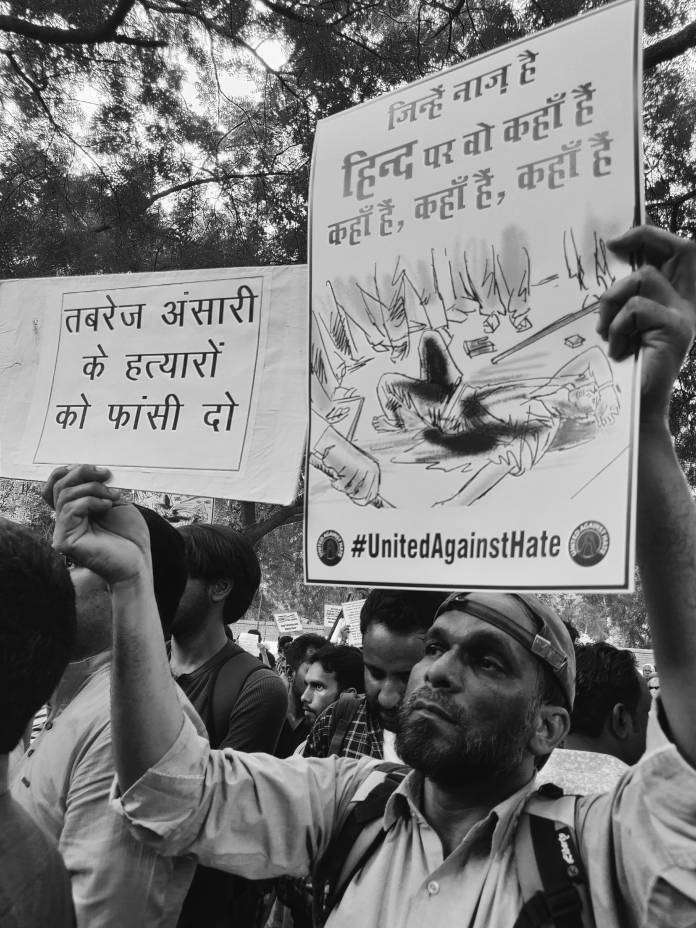

“Lord Ram stands for compassion but these people have made him a made a symbol of religious bigotry”, one angry protestor says.

“Yesterday they killed Akhlaq and Pahlu Khan, today they are killing Tabrez, tomorrow they will kill you, all of us one by one”, chants one protestor.

Protests Using Art: Showcasing Protest Poetry And Music
Asking the country to unite against hate crime and slamming down divisive tactics of politicians, artists come forward and appeal to the crowd. Poojan Sahil sang and performed his music as a form of protest. Nabiya Khan, poet, an aspiring teacher and a history major performed a poem called ‘Junaid’.
“Ram ke naam pe Tabreez ka qatl karne walo, (In Ram’s name, Tabreez’s killers)
Ram ko kya mu dikhaoege? (What face will you show Ram?)
Nafrat aur hinsa ki aag se kitne ghar jalaoge (How many homes will you burn in the fire of hate and violence)”, she recites.
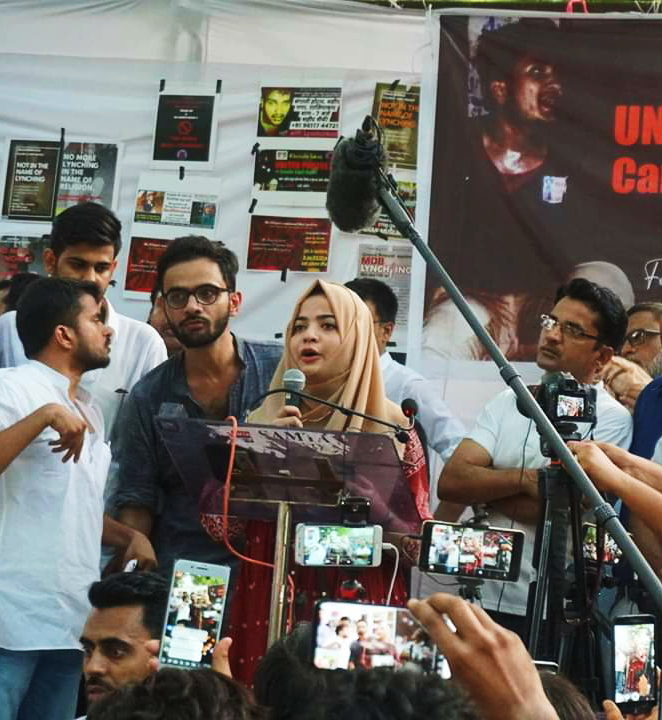
She speaks to Feminism In India and says, “Lynching of Tabrez is a hallmark of Modi’s second term in power. Chants like ‘Jai Shree Ram’ were used by BJP ministers to bully Muslim leaders. These ministers are no less than the lynch mobs on streets.”

“The sun of the Ganga-Jamuna culture sets into the ocean of Dadris’ blood
the tricolour enfolding the corpse of the killer
has become the burial shroud of secularism
ear drums collapse from the cacophony of the Azaan
and smear tilak, made from the screams of Akhlaqs'”
This is an excerpt from Samvidhan (The Constitution), the poem of Kaushik Raj, an editor with Youth Ki Awaaz who performed his poetry to highlight the frequency of the violent mob attacks. The performances are concluded with a peaceful, candlelight vigil outside Jantar Mantar, thus concluding the 2.5-hour long protest held in the capital city.
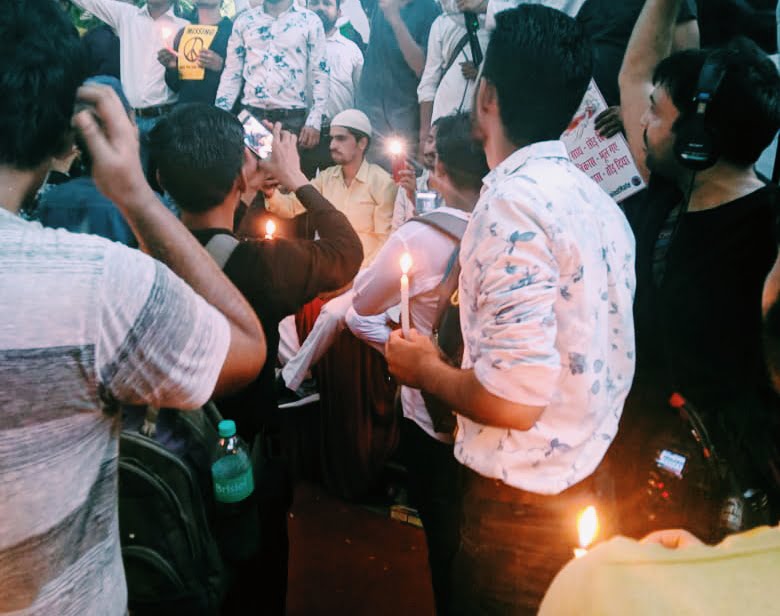
Government response to the attacks
In a tweet, PDP chief and former J&K CM, Mehbooba Mufti wrote, “Tabrez Ansari was lynched to death in BJP-ruled Jharkhand. A Hindu mob thrashed him ruthlessly because he refused to chant ‘Jai Sri Ram’. Is this NDA 2.0’s New India? Yeh kaunsa tareeka hai sabka vishwas jeetnay ka (what kind of a process is this to win everyone’s trust)?”
Congress’s leader Rahul Gandhi called the lynchings a ‘blot on humanity’. The incident was also criticized by senior Congress leader Ghulam Nabi Azad who called Jharkhand a ‘lynching factory’ citing the frequent, weekly attacks on Dalits and Muslims.
The growing fear in minorities, police apathy combined with no prompt action by the government continues to shake the citizen’s trust in the permanence of true ‘democracy’ and secularism.
MP Mahua Moitra, in her debut parliament speech, remarked, “Slogans and symbols are being used to test religion. There is no one slogan, no one symbol that ensures any Indian that they are a patriot. There is no one test.”
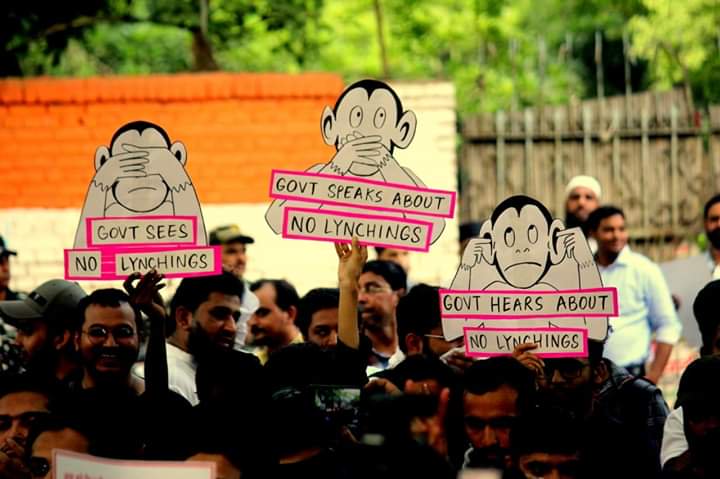
BJP leader, Jayant Sinha was seen garlanding the mob lynching convicts in Jharkhand. Prime Minister Narendra Modi condemned the lynching in a speech at the Rajya Sabha by saying he was ‘pained’ by the incident. However, he added that it was unfair to insult the state of Jharkhand by calling it a hub of lynching.
Also read: In Photos: Journalists In Delhi Protest Against The Illegal Arrest of Prashant Kanojia
Afzal Khan
Photo courtesy: Afzal Khan and Meghna Prakash
About the author(s)
Meghna, who goes by the name plebwrites, enjoys discussing literature, gender politics, sexuality, and mental health. As a journalist, she thrives on documenting people and culture stories and uses poetry as her cathartic getaway. She's been a featured artist with Kommune, Unerase poetry and her work has been published in Ethos Literary Journal, Scroll, Homegrown, Wire and Sunday Guardian. Meghna has published a book of poems on mental health alongside six other distinguished poets called 7 Transgressions, available on Amazon and in print.

